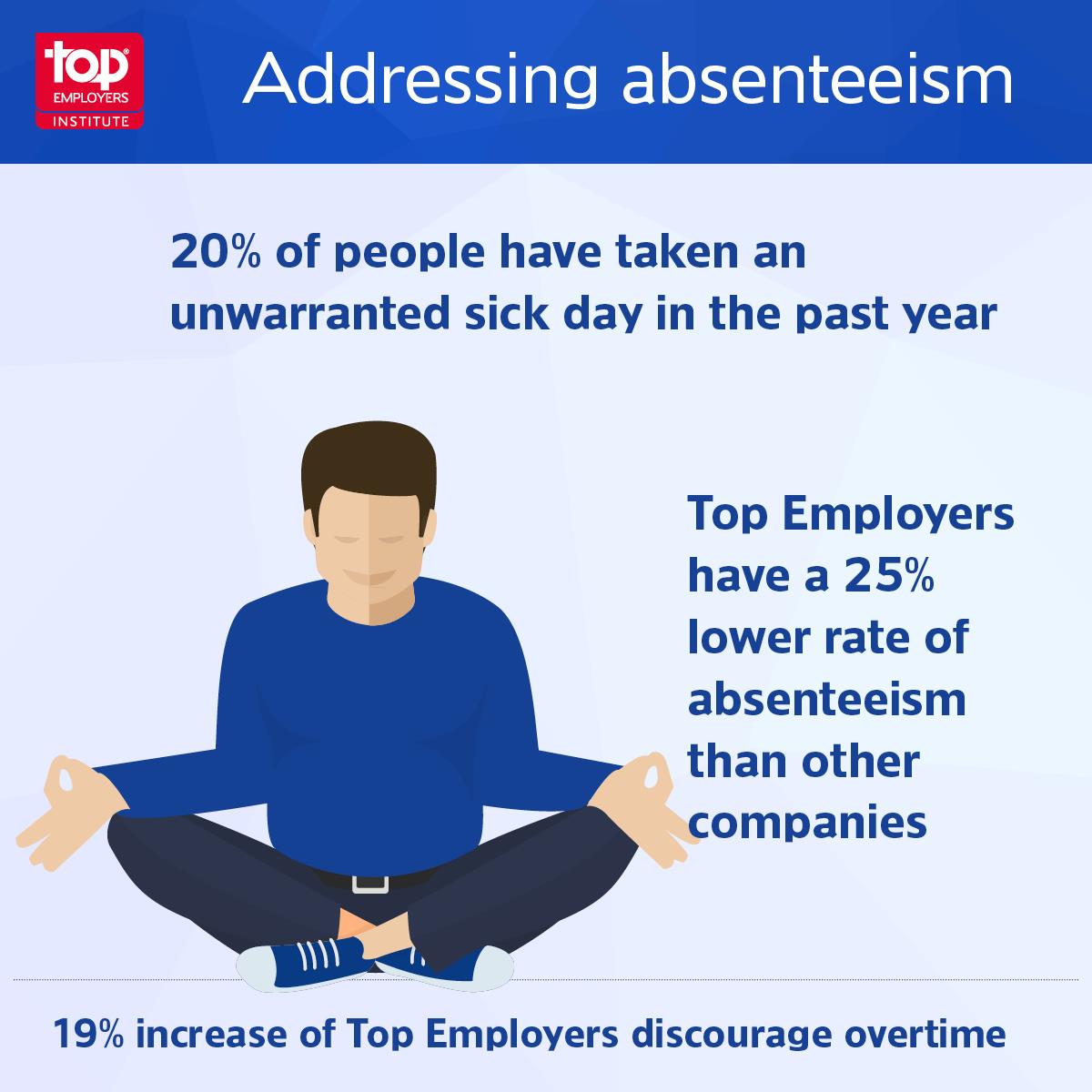How to address absenteeism through wellness measures

Hands up if you’ve taken a sick day in the past year? Statistically speaking, there’s an 80 percent chance your hand is still by your side. However, that also means around 20 percent of us have grabbed an unofficial ‘duvet-day’ at least once in the past 12 months.
Occasional ‘unilateral absenteeism’, particularly on the first sunny Monday of summer, while not to be encouraged, is more or less a recognised part of doing business. Persistent or long-term absenteeism across a company however, is altogether a different matter, and one for HR to address.
“Top Employers enjoy an absenteeism rate some 25 percent lower than other companies of a comparable size”
In order to address it, one must first identify the cause. Sunny Mondays aside, a proportion of absenteeism is unpredictable and unpreventable: a sudden sickness, a bereavement, travel delays, or an accident, for example.

Certified Top Employees have a lower absenteeism rate than other companies
Other causes, though not completely preventable are more predictable, and can be mitigated against. According to the CIPD, the five major contributors to long-term absence from the UK workplace are stress, acute health conditions, mental health problems, musculoskeletal issues and back pain.
At Top Employers Institute, we have a long history of researching the HR practices of the best employers in the world, identifying those factors that contribute to exemplary employee conditions. When addressing employee ailments that cause long-term absence, the vast majority of Top Employers take affirmative action: 88 percent offer stress counselling, 86 percent offer health screening, 90 percent have confidential advisors, 87 percent offer a fitness centre subsidy and 97 percent employ an occupational health team.
The headline benefit of this investment is an absenteeism rate some 25 percent lower than other companies of a comparable size. The behind-the-headlines benefit is reduced absenteeism cost and less disruption to workflows, with further advantage gained from incremental elevation of employer-brand-appeal.
“Relative to the EU, the UK has more wellbeing balls in play”
Evidence exists to suggest these wellbeing practices are paying back. Certainly, year-on-year, they are being integrated more into the daily activity of Top Employers. For example, there has been a marked annual increase in the proportion offering Burnout Recovery programmes, Weight Loss programmes, Wellness Facilities and Cash Bonuses for achieving Wellness Goals. And there has been a 19 percent increase in the proportion discouraging overtime.
Relative to the EU, the UK has more wellbeing balls in play. Whether this is because we actually need more support (The Independent lists the UK as the 7th hardest-working country in Europe) or because it’s just our way of doing things is debatable.
Either way, the UK cohort of Top Employers is significantly more likely to operate EAP; offer Debt Support, a Fitness Centre Subsidy, a Confidential Advisor and a Personal Support Helpline. The one area of significant difference weighted toward the EU is in the provision of an in-house doctor - and perhaps we have the good old NHS to thank for that.
At the end of the day, most firms would like to see a reduction in absenteeism. Fixing the weather is beyond the scope of HR teams, but building in structural processes and programmes to a business, which improve overall employee wellbeing, and ultimately benefit the business financially is possible. And Top Employers are already doing it.
Niet zomaar een tevredenheidsenquête bij het personeel:
Subscribe to our newsletter
Stay on top of the latest HR news & trends from the Top Employers Institute.




